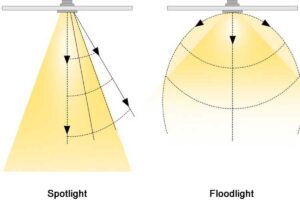Many people are wasting money and energy with the wrong lighting choices. They’re buying lights that don’t fit their needs—resulting in high bills, poor performance, and endless frustration. But there’s a better way. In this post, I’ll walk you through everything you need to know to choose between LED lights and solar lights—so you won’t make the same mistakes again.
LED lights and solar lights both provide energy-efficient lighting solutions, but they serve different purposes and operate differently. LED lights use electricity from a power grid and deliver bright, long-lasting illumination, while solar lights use sunlight to generate power and store it in batteries. Choosing between the two depends on your project, location, and budget. Each has its strengths, and understanding the differences will help you make the best decision for your needs.
Still unsure which lighting solution fits your needs best? Let’s break it all down.
Table of Contents
What are solar lights?
Solar lights are outdoor lighting systems powered by solar energy. They include a solar panel, a rechargeable battery, and an LED light. During the day, the solar panel absorbs sunlight and converts it into electricity, which gets stored in the battery. At night, the stored power lights up the LED. These lights work well in sunny regions and remote locations where running electricity might be hard or expensive. No need for complicated wiring or high electricity bills. They’re simple, self-sufficient, and green.
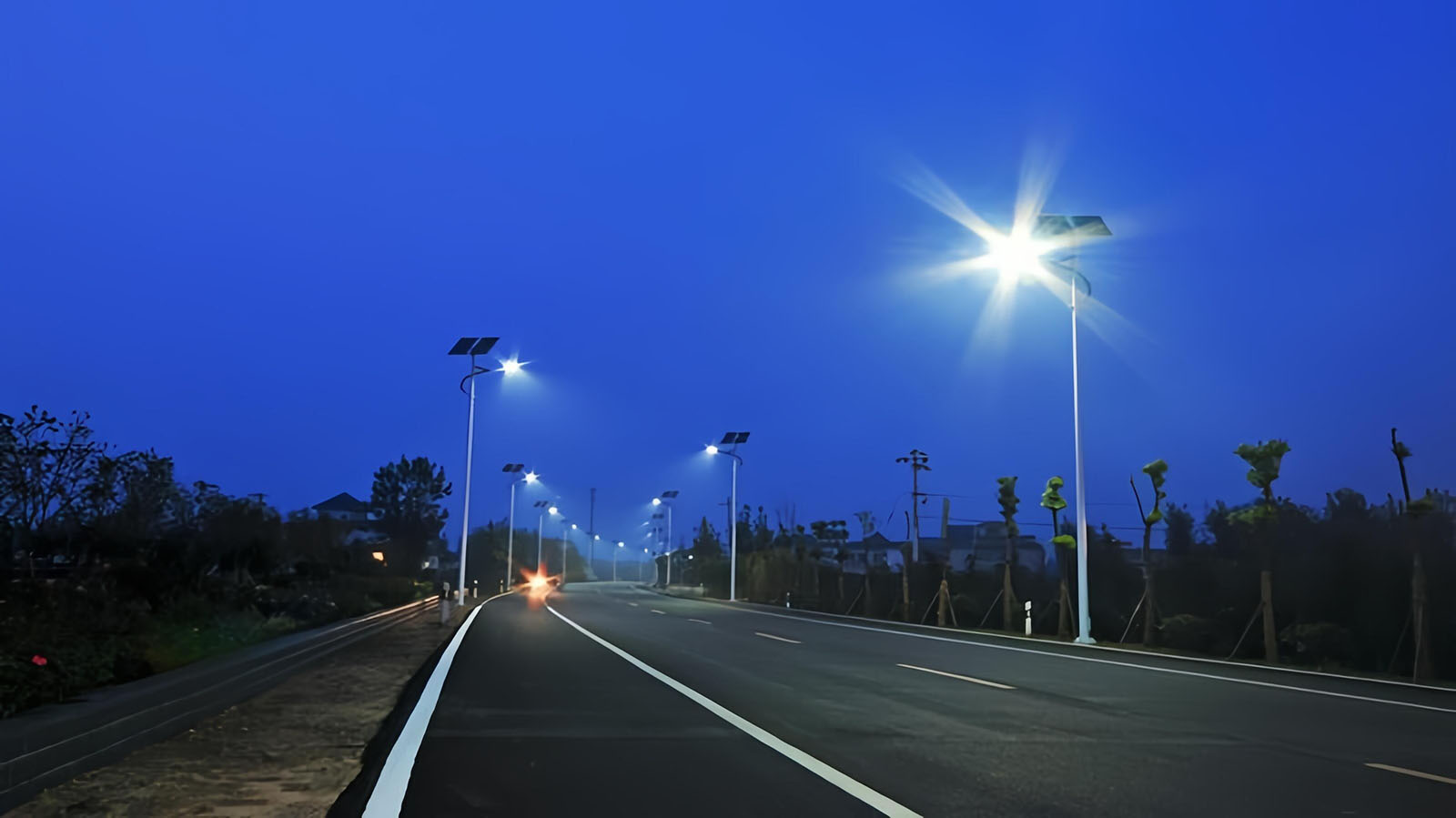
How Solar LED Lights Work
Solar LED lights use a simple yet effective system to convert sunlight into nighttime illumination. They operate entirely off-grid, making them a smart, energy-saving solution for outdoor lighting.
Here’s How They Work Step by Step:
- Solar Panel Captures Sunlight
During the day, the solar panel absorbs sunlight and converts it into electricity using photovoltaic (PV) cells. -
Energy Gets Stored in a Battery
That electricity charges a built-in rechargeable battery—typically lithium-ion or lithium iron phosphate. This stored power is saved for nighttime use. -
Light Sensor Activates the LED
As daylight fades, a sensor automatically turns on the LED light. It uses the stored battery power to provide consistent illumination. -
Optional Features
Many solar LED lights come with:
– Motion sensors: Light turns on only when movement is detected, conserving battery life
– Timers: Lights stay on for set hours
– Dusk-to-dawn sensors: Auto on/off based on ambient light levels
Where They Work Best:
Because they don’t need wiring or grid power, solar LED lights are perfect for:
– Gardens and backyards
– Pathways and walkways
– Driveways and parking lots
– Rural roads or undeveloped land
– Emergency and temporary lighting
They’re easy to install, cost nothing to run, and provide reliable lighting in remote or off-grid locations.
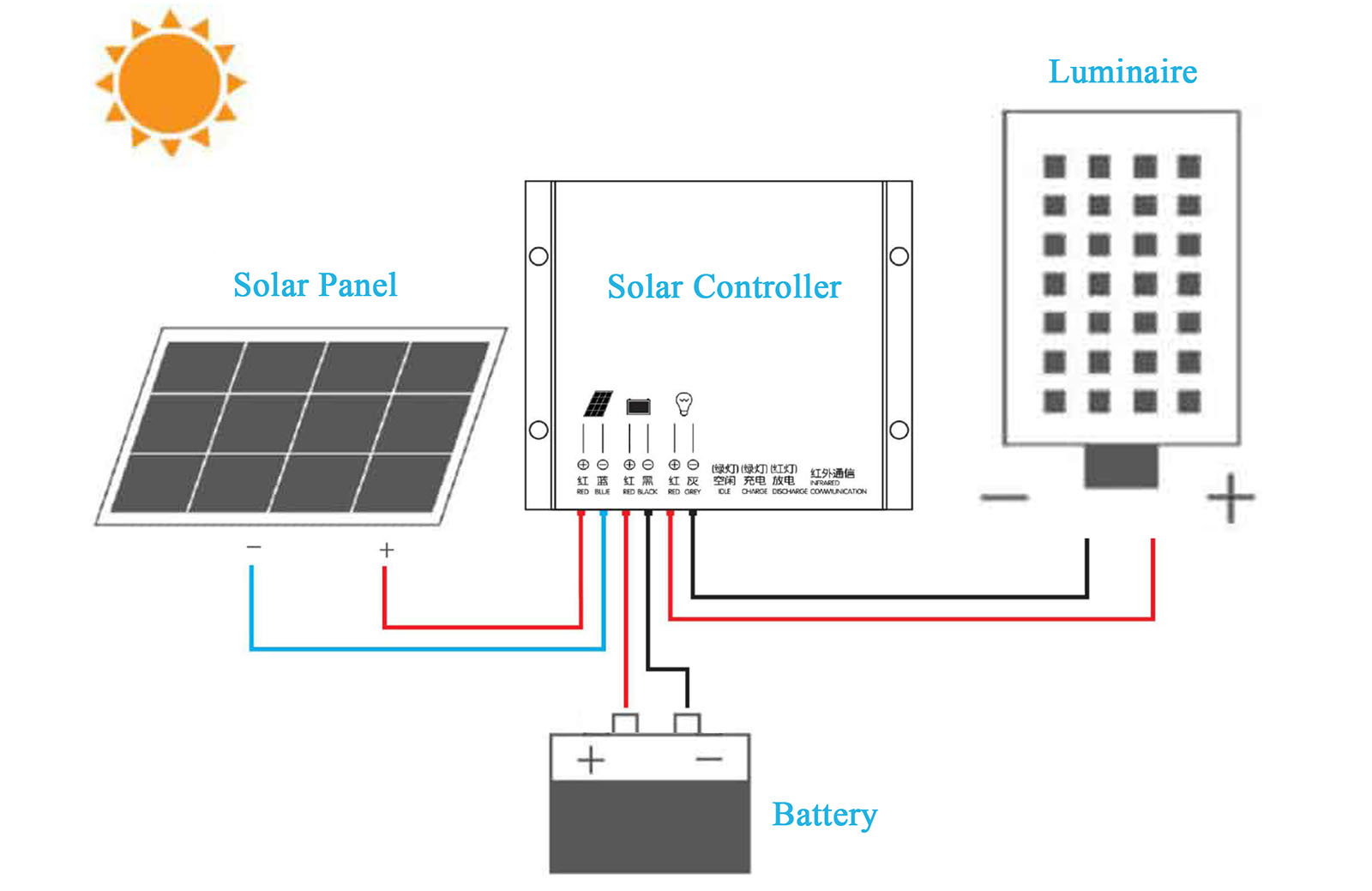
What Are the Advantages and Disadvantages of Normal LED Lights?
LED lights have become the go-to option for both residential and commercial lighting. While they offer major benefits, they’re not without a few trade-offs. Here’s a clear look at both sides:
Advantages of Normal LED Lights
- Energy Efficiency
LEDs use up to 80% less energy than incandescent and halogen lights. That means lower power bills and less impact on the environment. -
Long Lifespan
Most LED fixtures last over 50,000 hours, significantly reducing replacement and maintenance costs. -
Low Heat Output
Unlike older bulbs that get hot to the touch, LEDs stay cool, making them safer and more efficient. -
Durability
LEDs are solid-state lights. There are no filaments or fragile glass, which makes them resistant to shocks and vibrations. -
Wide Variety
Available in many shapes, sizes, color temperatures (from warm to cool white), and beam angles—ideal for just about any lighting need. -
Instant On
No warm-up time. LEDs reach full brightness the moment they’re switched on.
Disadvantages of Normal LED Lights
-
Requires Wired Power
Unlike solar or battery-powered lights, standard LEDs need to be plugged in or hardwired to the electrical system. -
Initial Cost
Upfront costs are higher than incandescent or CFL bulbs. But the energy and maintenance savings often offset this quickly. -
Installation Complexity
Some fixtures may require electrical work, especially in commercial settings. Improper installation can affect performance or safety. -
Driver Dependency
LEDs need a driver to convert AC to DC. A poor-quality driver can lead to flickering or shorter lifespan.
Bottom Line
Normal LED lights offer big energy savings, long life, and consistent performance—but you’ll need a proper power source and possibly a bit of electrical know-how to get them installed right.
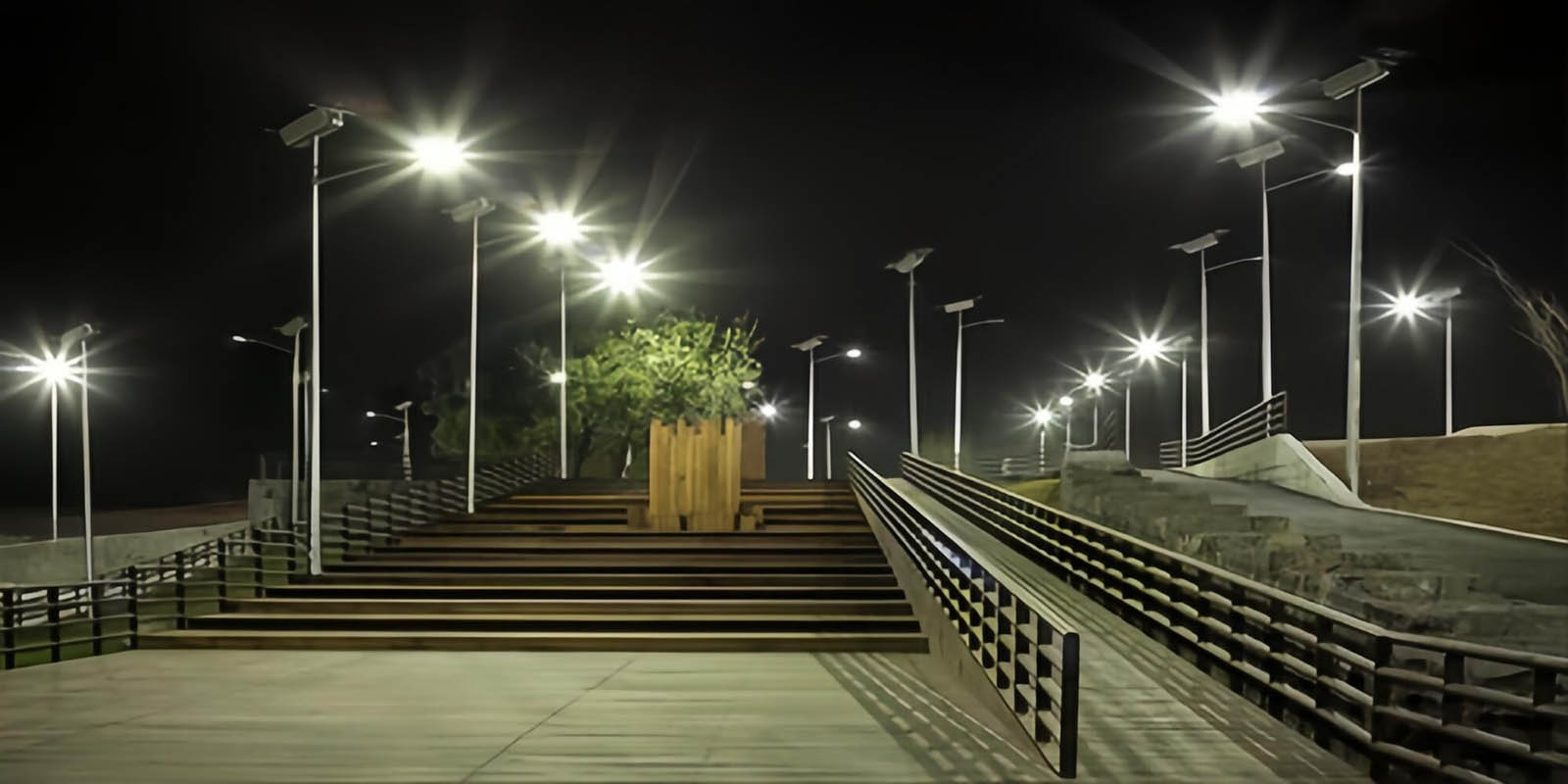
What Are the Advantages and Disadvantages of Solar LED Lights?
Solar LED lights have become a popular choice for outdoor and off-grid lighting, but like any technology, they come with both benefits and limitations. Here’s a clear breakdown to help you decide if they’re the right fit for your needs.
Advantages of Solar LED Lights
- Off-Grid Operation
Solar lights don’t need to be connected to the electrical grid. That means no monthly electricity costs and no trenching or wiring during installation. -
Easy Installation
Most models are plug-and-play. Mount the fixture, angle the panel, and you’re done. Perfect for rural, remote, or temporary setups. -
Eco-Friendly
They reduce carbon footprint by using renewable solar energy. No emissions, no power drain. -
Low Maintenance
With fewer moving parts and durable LED tech, these lights typically require very little upkeep beyond battery checks. -
Flexible Placement
Install them in areas without grid access—like remote roads, farms, pathways, or emergency sites. -
Built-in Features
Many include motion sensors, dusk-to-dawn sensors, and smart energy management systems to stretch battery life.
Disadvantages of Solar LED Lights
-
Sunlight Dependent
In areas with long winters, frequent rain, or heavy shade, the solar panel may not collect enough energy to power the light all night. -
Higher Upfront Cost
Solar fixtures, especially high-power models, tend to be more expensive upfront compared to grid-powered LEDs. -
Battery Maintenance
The rechargeable batteries used in solar lights usually last 2 to 5 years and will need replacement, adding to long-term costs. -
Performance Drops in Bad Weather
Overcast or rainy days reduce charging efficiency, which may lead to shorter lighting durations at night. -
Limited Brightness
For high-lumen or industrial applications, solar may not always provide the same output or reliability as wired systems—unless designed with oversized panels and battery packs.
Bottom Line
Solar LED lights are ideal for sustainable, cost-saving lighting in the right environment. But if you’re in an area with limited sun exposure or high lighting demands, make sure you factor in battery and weather limitations before choosing this route.
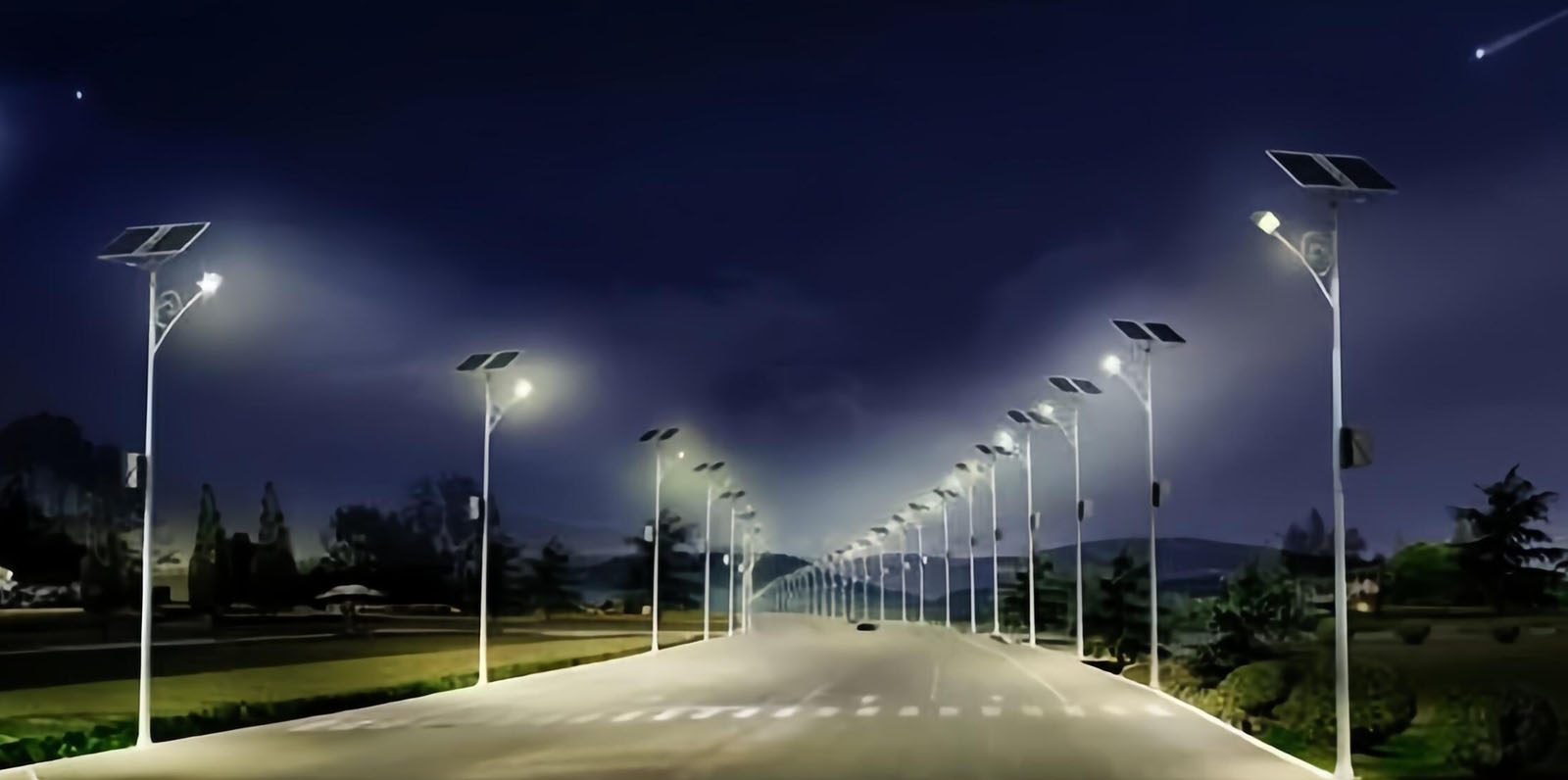
What is the difference between solar LED lights and normal LED lights?
Solar LED lights are self-powered using solar energy. They store energy in batteries and work best in outdoor settings where sunlight is available. Normal LED lights, on the other hand, use electricity from the grid. They’re more reliable in terms of power delivery, especially for indoor or high-power applications like warehouses or stadiums. If you’re looking at the comparison between solar street light and normal street light, solar lights save energy but might not perform well in low-sunlight regions. Normal LED street lights are more stable, easier to control, and offer consistent brightness.
What is the difference between solar light and flood light?
Here’s where people often get confused. A solar light is a lighting fixture that runs on solar power. A flood light, like our Luna LED Flood Light, is a high-intensity light that floods an area with bright light—it can be solar or electric. The best solar flood lights are great for areas with plenty of sun and low electrical infrastructure. But if you need powerful, all-night lighting like in sports fields or parking lots, grid-powered flood lights are more reliable. It’s really about how much light you need and how often you need it.
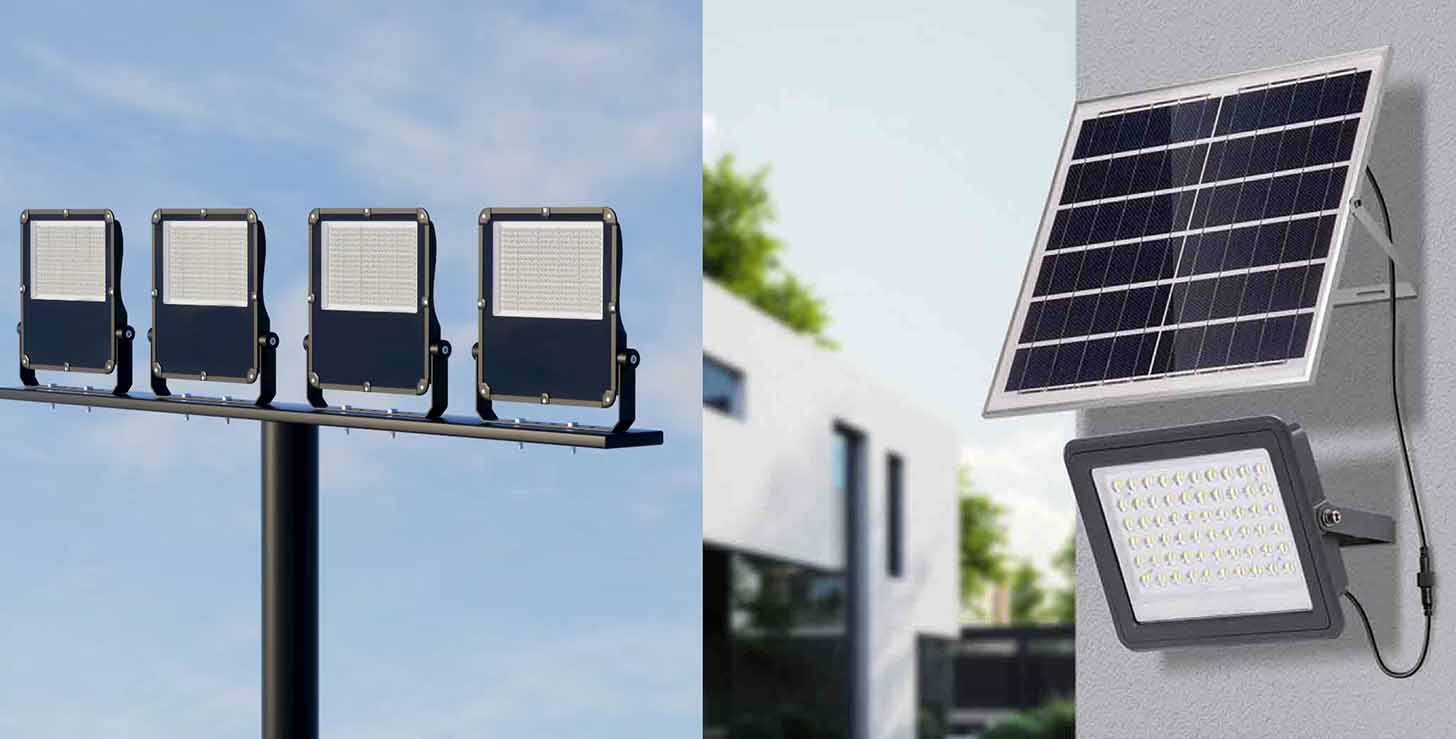
LED Floodlight vs. Solar LED Floodlight
How to Choose the Right Lighting Solution?
Start by asking where the lights will be used. Is the area sunny year-round? Do you need very bright light for a long time each night? If yes, go for electric LED lights. Need lights for a garden path or a remote area? Solar might be your best bet. Also consider installation costs, energy bills, and maintenance. And don’t forget—solar lights might not perform well in cloudy climates. But for areas with strong sun, they offer long-term savings and easy setup. Thinking about the cost of a solar street light? It might be higher upfront, but the savings over time can make up for it.
Conclusion
Choosing between LED lights and solar lights doesn’t have to be confusing. LED lights are reliable and powerful, perfect for when you need steady, long-term lighting. Solar lights are flexible and eco-friendly, ideal for areas with lots of sun. Knowing the differences helps you make the right choice and avoid costly mistakes.
Got a project or a question? Reach out to us anytime — we’re here to help.



